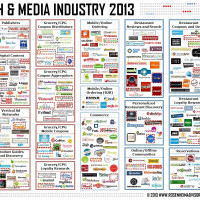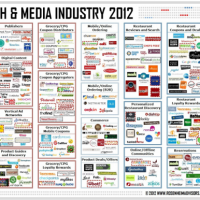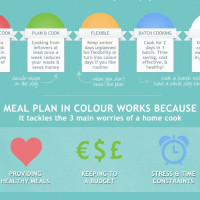Last Thursday, publisher Condé Nast announced their acquisition of online and mobile recipe box and shopping list platform Ziplist. Ziplist offers food publishers and bloggers fully branded, multi-platform tools that make it easy for their readers to save recipes and ingredient shopping lists to a universal account. Their services are being used by over 6,500 food partner websites and blogs, including Marthastewart.com and Simply Recipes, which has resulted in rapid user aquisition- the startup hit 1 million users in just 9 months (see the infographic below). While Ziplist will reportedly continue to operate independently, the deal has left some like paidContent’s Kevin Fitchard wondering how Ziplist partners will feel about “supporting one of their [Condé Nast] biggest competitors in food and lifestyle media.”
 Condé Nast will be integrating the technology into their food brand platforms, including Epicurious and Gourmet Live, but will not be receiving any special treatment. Ziplist CEO Geoff Allen says Condé Nast will have the exact same capabilities as all of Ziplist’s other partners. The difference is that Condé Nast will “share with them on the additional revenue streams our platform provides, which initially is traditional advertising, but will become highly targeted offers reach consumers when they are at the food purchase consideration phase,” commented Allen in an email interview. In fact, Allen does not anticipate backlash from their existing brand partners.
Condé Nast will be integrating the technology into their food brand platforms, including Epicurious and Gourmet Live, but will not be receiving any special treatment. Ziplist CEO Geoff Allen says Condé Nast will have the exact same capabilities as all of Ziplist’s other partners. The difference is that Condé Nast will “share with them on the additional revenue streams our platform provides, which initially is traditional advertising, but will become highly targeted offers reach consumers when they are at the food purchase consideration phase,” commented Allen in an email interview. In fact, Allen does not anticipate backlash from their existing brand partners.
“So far it has been quite the opposite- the response has been fantastic,” Allen commented by email. “Our partners recognize that the only recipe box and shopping list that has value, is the one that is “everywhere” the consumer is- or else it just does not get adopted in any meaningful way.”
In a way, Ziplist turns the the traditional digital publishing model on its head. Rather than making websites a destination, the startup creates new opportunities for publishers to extend the relevance and accessibility of their content beyond their own platform. Last September, ZipList launched a food recommendation engine that takes into account a user’s existing food discovery and shopping habits to deliver future meal inspirations. This is clearly a value add for publishers looking to better understand their users and to deliver relevant recipes to a new audience. It also means that Ziplist brand “partners” benefit from one another’s networks.
“We have never -and will not ever- share user information from one property with another, and our commitment and demonstration of this has led to dramatically increased adoption,” Allen remarked. “A shopping list and recipe box, no matter how capable it is, will never be the core competitive basis of our partners. They inspire and engage their audiences with wonderful content and experiences- we just step in and help their users execute on that. So again, the broader our network, the more the consumer uses it, and therefore everybody wins. This why Condé Nast has gone to such great lengths to keep us as a separate, independent company.”
What’s in it for Condé Nast?
“This acquisition enables to deliver on our commitment to marry quality content and innovative technology, giving unprecedented scale as we focus on creating additional revenue streams in the digital space,” says Condé Nast President Bob Sauerberg. “Our goal is to build ZipList as an independent company while collaborating with our food brands.”
What does Ziplist plan to do with the cash?
Ziplist is sitting on a significant amount of rich, cross-platform data about their users’ tastes, preferences and purchasing intent. Similar to many of the predictions I made in the 2011 Recipe Trends Report, Allen says we can expect the company to roll out “advanced ways for consumers to save money on their purchases, enhanced content discovery, more personalization, and additional capabilities to help our users more efficiently plan meals and shopping trips.”
With Yummly’s big investment announcement, and now Ziplist’s, 2012 is certainly shaping up to be an interesting year for the future of cooking and publishing.








